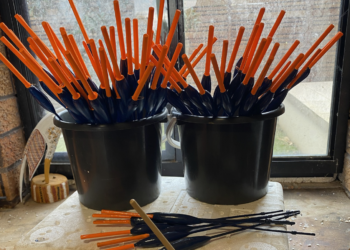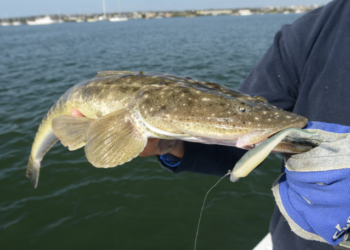Knots & Rigs with Mark Williams
I DOUBT there’s a more famous knot than the Albright Special. Named after its inventor, the pioneering Florida Keys fly fishing guide Jimmie Albright, the knot has been used for over half a century by anglers focused on the pursuit of big fish on light line.
Jimmie Albright wasn’t just a witness to the birth of saltwater fly fishing, he was an integral part of it. Among the first guides to target giant tarpon and bonefish for fly fishing clients, he needed a means to connect light tippets to heavy shock leaders to cope with the demands the giant silver kings were placing on his tackle. The Albright Special is the result of that search. His fame as a guide spread and he was soon guiding or fishing with the most famed of celebrities such as writer Ernest Hemingway, actor Jimmy Stewart, baseball star Ted Williams and even US President Herbert Hoover. Albright’s knotological legacy is still being used to set records today.
The Albright Special is among the most versatile of connections. It was initially popular due to the fact that it was probably the first knot developed that could be used to successfully connect monofilament lines of vastly different diameters. Noted US rigging authority the late Bill Nash rated the knot when tied with single lines as having a break strength of around 85 per cent. However, if the knot is tied with the lighter line doubled by means of a Bimini Twist or plait it really becomes a 100 per cent strong connection. This is the key reason this knot has become such a popular connection with anglers intent on pursuing big fish on light line – they want a connection system that retains the 100 per cent break strength of their main line or class tippet.
However there’s so much more to the Albright Special. It can also be used to connect braided, coated or single strand wire leaders to a monofilament main line. It has also been used in the past in fly fishing for connecting a butt section to fly line or backing to fly line, although there are other connections more commonly used for these purposes today.
In recent years I’ve noticed that there has been a decline in the use of this wonderful knot. It is a connection that requires care when pulling up and I think that may spook some anglers into using knots that may be more foolproof, even though they may actually be marginally inferior connections. I’ve only had the Albright Special slip on me a handful of times in over a quarter of a century of use and on those rare occasions it was when I was fishing in pouring rain and failed to pull the knot up properly due to wet hands. It is a connection that should be pulled up with considerable force, in my opinion, to form and fully complete the knot.
Specific scenarios where I use the Albright Special include live baiting using light monofilament main line where a heavy hard mono leader is required for the species being targeted. I also like using the knot when popper fishing with heavy threadline outfits to attach heavy hard mono leader material to a GSP main line. In this specific situation the Albright Special produces a considerably smaller knot than more modern contemporaries such as the Ducknose Knot as the finer GSP line wraps around the looped end of the hard mono leader, whereas with the Ducknose the thick hard mono leader wraps around the GSP resulting in a much bulkier connection. There’s nothing I dislike more than big bulky knots clanking through the rod guides incessantly.
A couple of points worth noting when tying the Albright Special. Firstly, it’s recommended to use a minimum of seven turns in the knot; however, I usually do more, particularly when connecting gelspun to a heavy hard monofilament leader material. Secondly, I like to be quite fastidious when first forming the knot, paying particular attention that the wraps are all laying neatly and not crossing over each other. Fly fishing great Lefty Kreh says in his must-read book Fly Fishing in Saltwater that if the wraps cross one another in the Albright Special then that is where the knot will break when under great stress. One of my personal rigging mantras is that if a knot doesn’t look neat and form correctly when I pull it up it gets cut off and done again. Maybe I’m overly fussy when it comes to rigging and I probably waste a bit of time and fishing line with this attitude, but I also lose very few fish to failed knots.
As per most knots that require considerable tension to pull them up I lubricate the Albright Special with saliva before fully tensioning it. The Albright Special is a knot that has held me in good stead right through my fishing career. It always seems to be the knot you go to when you’re chasing the toughest of fish – whether it’s been those omnipotent PNG black and spot tail bass in a remote New Britain river or chasing longtail tuna and cobia off the east coast rocks ledges, it’s done the job for me. I’d like a dollar for every good fish I’ve caught while using the Albright Special.






















